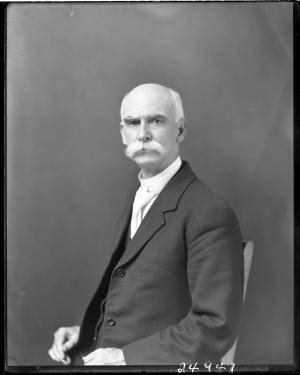![The First Daguerreotype Camera Made in the United States, 1839, 1896, Smithsonian Institution Archives, SIA Acc. 12-492 [SIA2012-6523]. The First Daguerreotype Camera Made in the United States, 1839](https://ids.si.edu/ids/iiif/SIA-SIA2012-6523/full/350,/0/default.jpg)
Smillie’s collection first started gaining traction when it was exhibited at the Centennial Exposition of the Ohio Valley and Central States, in Cincinnati, 1888. However, it wasn’t until the purchase of fifty photographs from the Capital Camera Club of the Capital Bicycle Club’s 1896 exhibition (regarded as the first recorded purchase of photographs as works of art by a museum) that the quite significant collection consisting of 1284 specimens gained official status. On July 15, 1896 , the Section of Photography, Division of Graphic Arts, United States National Museum was created. In addition to his duties as the Smithsonian’s chief photographer, Thomas Smillie was appointed Custodian of the Section of Photography.

![Installation View of Smithsonian Photography Exhibition, c. 1913, 1913, Smithsonian Institution Archives, SIA RU000095 [SIA2012-2610]. Installation View of Smithsonian Photography Exhibition, c. 1913](https://ids.si.edu/ids/iiif/SIA-SIA2012-2610/full/300,/0/default.jpg)
Occupying the northwest court of the Arts and Industries Building, the exhibit of historical photographs and equipment meticulously collected by Smillie over the course of several decades were arranged chronologically—illustrating, from Camera Obscura to newer technologies in color, x-ray, spectrum, solar, and moving picture, a thorough and comprehensive history of photography.
![Section of Gallery with Collections on History of Photography, 1896, Smithsonian Institution Archives, SIA Acc. 12-492 [SIA2012-6524]. Section of Gallery with Collections on History of Photography](https://ids.si.edu/ids/iiif/SIA-SIA2012-6524/full/300,/0/default.jpg)
Today, the Photographic History Collection has over 200,000 images and 12,000 pieces of equipment. Over the span of 120 years and numerous administrative reorganizations, the Photographic History Collection continues to reflect on all aspects of photography, with representative specimens illustrating an in depth regard for the breadth of photographic processes, genres, and concepts. The collection serves to realize Smillie’s vision that “an effort will be made hereafter, especially in connection with the future expositions of amateur photography, to secure such works as are necessary to make the collection in the National Museum a reference and record collection, which shall not only be a matter of interest and pleasure to the public, but of practical value to the photographers themselves."
Related Collections
Record Unit 158, United States National Museum, Curators' Annual Reports, 1881-1964, Smithsonian Institution Archives
Record Unit 529, National Museum of American History (U.S.) Division of Photographic History, Records, circa 1883-1984, Smithsonian Institution Archives
Related Resources
David E. Haberstitch, Photographs at the Smithsonian Institution. Picturescope 32 (1): 4-20 (Summer 1985), p. 7.
Hidden Treasures: The Photographic History Collection at the Smithsonian’s National Museum of American History, Teaching Photography
Produced by the Smithsonian Institution Archives. For copyright questions, please see the Terms of Use.

Leave a Comment